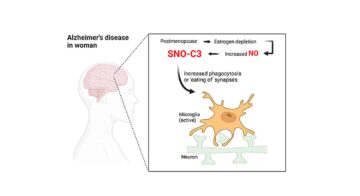Progress has been made in elucidating sleep and wakefulness regulation at the neurocircuit level. However, the intracellular signaling pathways that regulate sleep and the neuron groups in which these intracellular mechanisms work remain largely unknown.
A new study by scientists from the University of Tsukuba used a forward genetics approach in mice and revealed a signaling pathway within brain cells that regulates the length and depth of sleep.
In particular, they examined genetic mutations in mice and how these affect their sleep patterns. They then identified a mutation that led to the mice sleeping much longer and more deeply than usual.
Low levels of the enzyme histone deacetylase 4 (HDAC4), which is known to limit the expression of target genes, were discovered to be the cause of this, the scientists found.
Senior author of the study, Professor Hiromasa Funato, said, “We focused on a protein called salt-inducible kinase 3, otherwise known as SIK3, which phosphorylates HDAC4. We previously found that this protein has strong effects on sleep.”
The scientists found that the mice slept less when SIK3 was absent or when HDAC4 was altered to inhibit phosphorylation. The mice slept significantly more when they had a more active form of SIK3, which increased the phosphorylation of HDAC4. They also discovered another protein, LKB1, which phosphorylates SIK3 and, when lacking, has comparable sleep-inhibitory effects.
Study co-senior author Professor Masashi Yanagisawa said, “Our findings indicate a signaling pathway within brain cells from LKB1 to SIK3 and then to HDAC4. This pathway leads to the phosphorylation of HDAC4, which promotes sleep, most probably because it affects the expression of sleep-promoting genes.”
Scientists did further research to determine which brain cells in these networks control sleep. This required changing the concentrations of SIK3 and HDAC4 in various brain cell types and parts. The findings showed that signaling in the hypothalamus controls the quantity of deep sleep, and signaling in the cortical cells controls the depth of sleep. The excitatory neurons, which can stimulate other neurons, were found to be crucial in both brain regions.
These results provide an essential insight into how sleep is regulated, which could potentially lead to a greater understanding of sleep disorders as well as the development of new treatments.
Journal Reference:
- Kim, S.J., Hotta-Hirashima, N., Asano, F. et al. Kinase signaling in excitatory neurons regulates sleep quantity and depth. Nature 612, 512–518 (2022). DOI: 10.1038/s41586-022-05450-1













